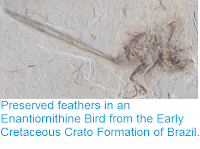Oviraptorosaurs are a curious group of Maniraptoran Theropod Dinosaurs (the group that also includes the Dromeosaurs and Birds) known from the Cretaceous of Eurasia and North America. They are known to have had feathers, and had very distinctive skulls, with short, toothless beaks and often high bony crests. The biology of these Dinosaurs is poorly understood, as their fossil record is fairly poor, but in recent years a large number of specimens have been discovered from a number of localities in China have greatly expanded our knowledge of the group.
In a paper published in the journal Scientific Reports on 10 November 2016, Junchang Lü of the Institute of Geology of the Chinese Academy of Geological Sciences, Rongjun Chen of the Dongyang Museum, Stephen Brusatte of the School of GeoSciences at the University of Edinburgh, Yangxiao Zhu, also of the Dongyang Museum and Caizhi Shen, also of the Institute of Geology of the Chinese Academy of Geological Sciences, describe a new species of Oviraptosaur from the End Cretaceous Nanxiong Formation of Jiangxi Province in southern China.
The new species is named Tongtianlong limosus, where 'Tongtianlong' means 'road to heaven' and 'limosus' means 'muddy', in reference to the mudstone in which the specimen was found. The species is described from a single specimen, almost complete and with both skull and jaws, preserved in an unusual posture, with its forelimbs outstretched and head raised.
The whole skeleton of the holotype Tongtianlong limosus in dorsal view (a) and lateral view (b). Scale bar is 10 cm. Lü et al. (2016).
Tongtianlong limosus is the sixth species of Oviraptosaur from the Nanxiong Formation, adding to the remarkable diversity of species in this group that have been discovered in China in recent years. Lü et al. consider the possibility that not all of these species may be valid, as they vary a great deal in size, leading to the possibility that some of the 'species' may be different sexes or growth stages of the same animal, as the ontogeny (growth pattern) of these animals is not well understood. However they consider this unlikely as each of the specimens shows a high level of unique features, which would be highly unusual in different growth stages of the same species.
An artistic reconstruction, showing the last-ditch struggle of Tongtianlong limosus as it was mired in mud, one possible, but highly speculative, interpretation for how the specimen was killed and buried. Zhao Chuang in Lü et al. (2016).
See also...
Follow Sciency Thoughts on
Facebook.








